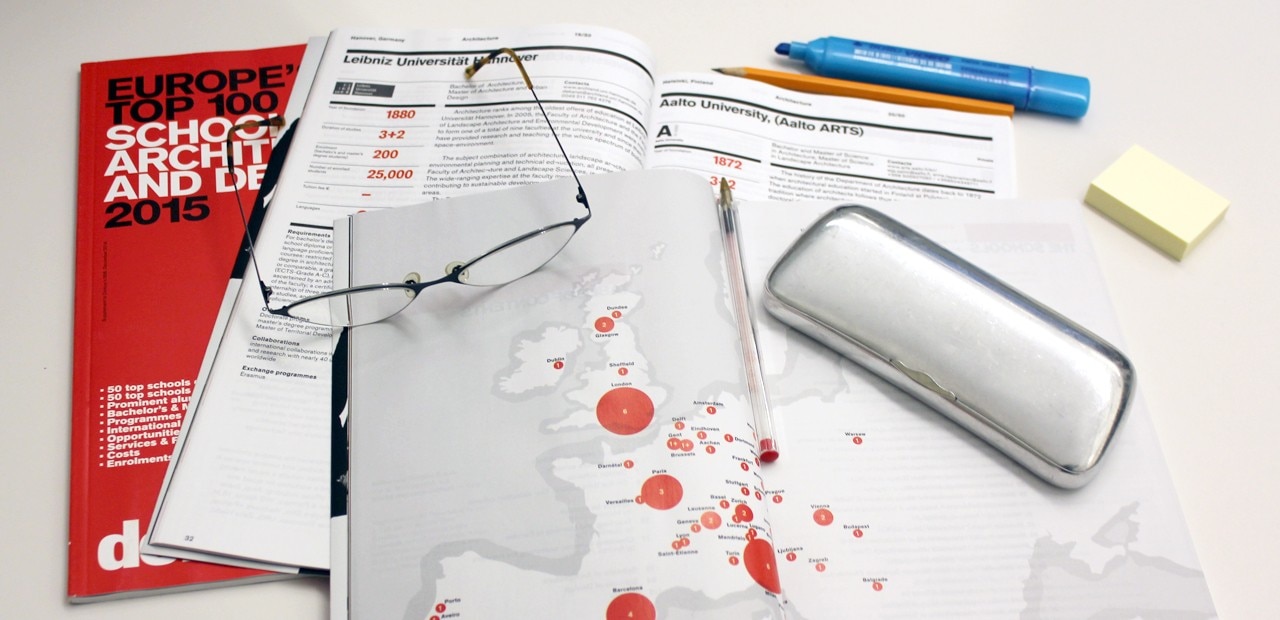It is important to underline that we have made a selection. We did not make a ranking, but decided to base this guide mainly adopting reasonable yet subjective criteria.
The criteria we used are summarised here:
1. The creation of a network of accredited references in the field of training in architecture and design that represents homogeneous geographic areas. This group allows us to validate the selection; it reflects differences between the schools and highlights aspects of excellence, new or old.
2. The examination of the widest possible geographic range in Europe.
3. The selection of institutions (especially for architecture) that have a recognised reputation in the community of architects and designers. This value clearly tends to privilege schools with a long tradition over new ones. On the other hand, although it is continuously being updated, European education is based on consolidated knowledge and institutions where the heritage of knowledge in many cases is not easily perceived by the bibliometric or digital parameters used in the more scientific disciplines.
4. In the design field, we considered belonging to a network of authoritative associations (e.g. Cumulus) in the field of education to be an accrediting factor.
5. The relationship with and use of new technology and equipment.
6. International relations with other institutions and internship systems for professional training.
7. The evaluation of professional results obtained by degree-holders after a certain lapse of time, taking into consideration the specificities of the different European institutions. Young designers and new graduates were interviewed on their formative experience.


